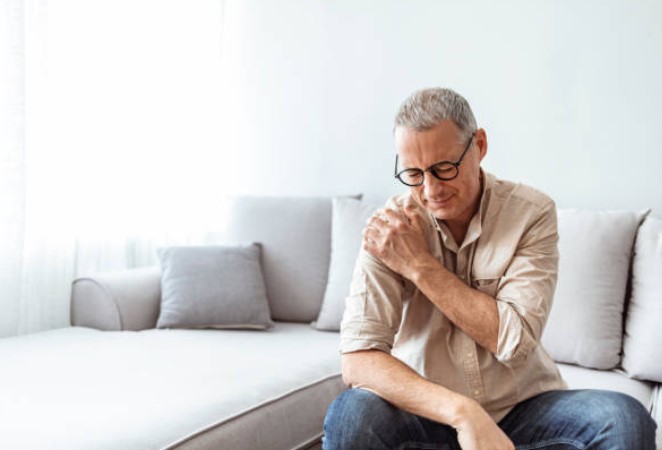Do you have shoulder pain after playing sports? Did you injure your shoulder from a specific play in your sport? Do you feel like your shoulder has a painful clicking and grinding sensation? Is it now difficult to pick up items from the top shelf? You may have injured the labrum of the shoulder. It is a common shoulder injury in many overhead sports. This injury occurs when the shoulder is pushed into an externally rotated and abducted position. Think about a baseball pitcher loading up the arm before a throw. However, this does not only occur in baseball! It can occur when your arm gets pulled in a contact sport or catching a heavy weight. In this blog, you are going to get an insight on the nature of labral injuries and what you can do about it.
What is the shoulder labrum?
The labrum is a thick connective tissue that is glued at the rim of the shoulder joint. The purpose of the labrum is to keep the shoulder joint moving smoothly throughout your shoulder motions. It also provides the shoulder socket greater depth so that the arm stays in the joint. This is why when you tear your labrum, you may feel painful clicking and grinding sensation. The general signs and symptoms associated with a labral tear are:
- Deep pain within the shoulder
- Clicking, catching and grinding sensation during shoulder movements
- Unable to perform overhead movements
- Decrease shoulder stability
- Pain when side lying on the affected side of the shoulder
- Pain when carrying and lifting objects
How do I fix a labral tear?
The good news is that not all labral tears will require surgery. The ability for the labral tear to heal itself depends on the location, type and severity of the tear. The most common labral tear is referred to as the superior labral anterior posterior tear (SLAP tear). The name describes the location of the tear. There are a few different ways the labrum can tear:
- Complete tear off the bone
- Partial tear on the edges of the labrum
- The tear is localised where the biceps tendon is attached
The ability to diagnose which type of tear involves attending a physiotherapy consultation and getting an MRI of the shoulder. However, it is important to note that pathological MRI findings are highly prevalent in both asymptomatic and symptomatic population. It usually takes approximately 12 weeks for a SLAP lesion to heal with conservative treatment. A general guideline is that there should not be any load to the labrum for the first 6 weeks. After the initial rest then progressively load the shoulder with the guidance of a physiotherapist. At MyPhysio our physiotherapists are experts are diagnosing and treating shoulder related pain. We’re here to help! Book an appointment today. We also have an Instagram page so you can stay updated on the latest physiotherapy tips.

